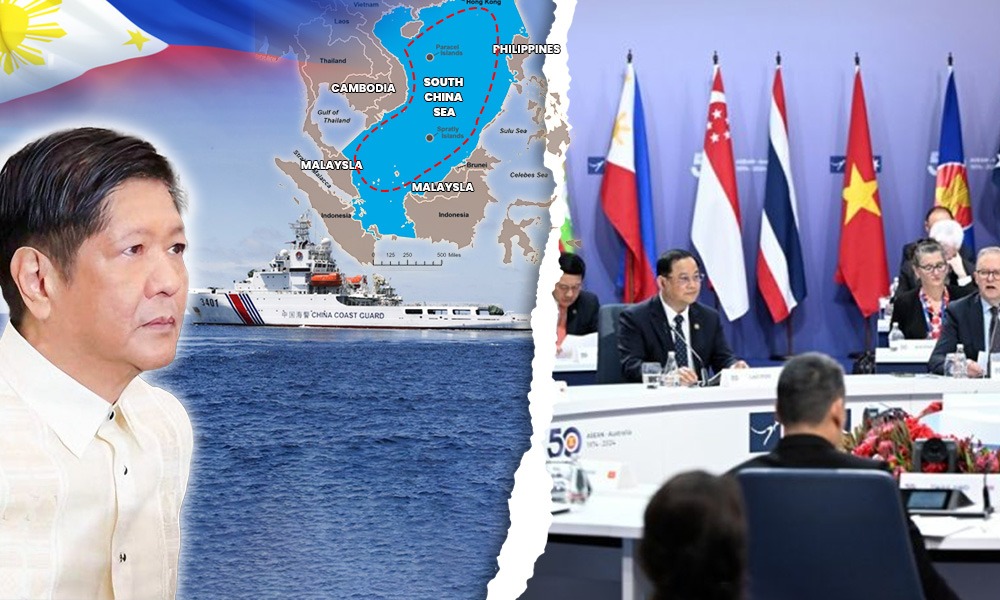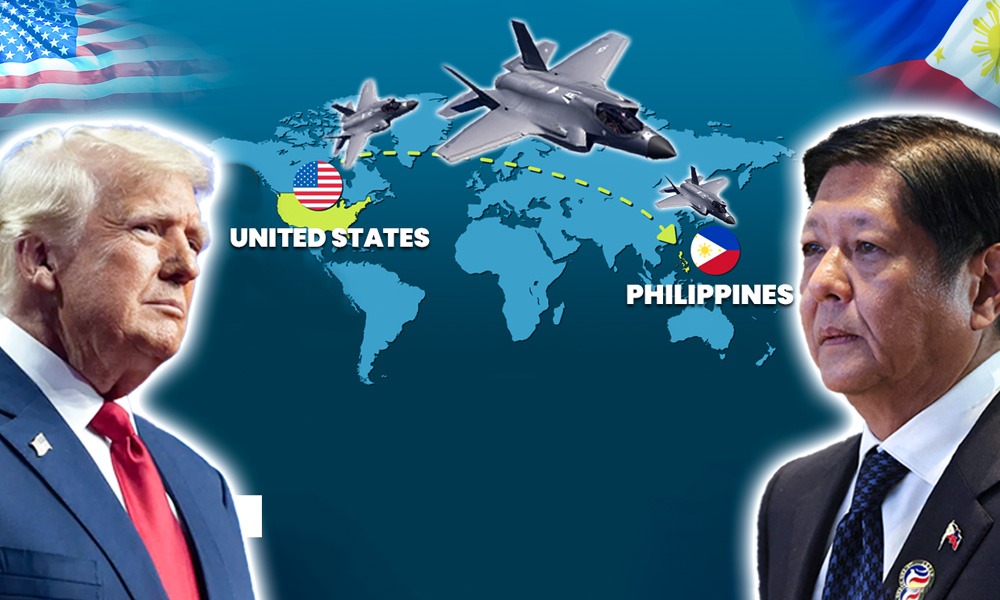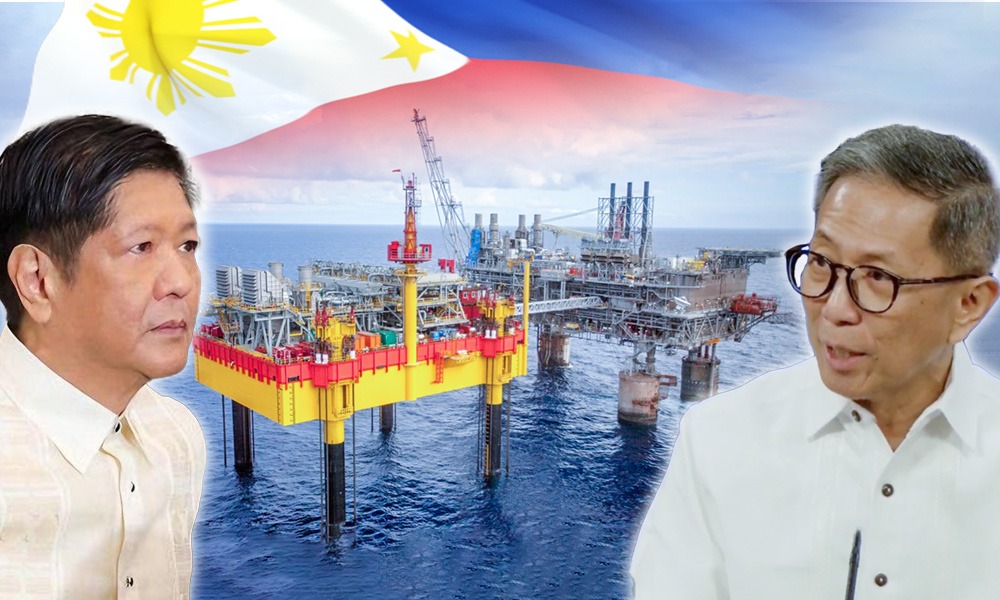What if I told you the greatest threat to Southeast Asia isn’t war, but silence? Imagine you’re part of a team built on promises of unity and protection. Now imagine being attacked, while your teammates stand back and say nothing. That’s how many in the Philippines feel about ASEAN. As China escalates aggression in the South China Sea, ASEAN offers little more than polite statements and empty appeals for restraint. The stakes? National sovereignty, regional peace, and the credibility of international law.
ASEAN, once hailed as a model of peaceful regional cooperation, now feels like a ship drifting into a storm without a captain. It’s a bloc that represents 10 nations and, by 2023, the world’s 5th-largest economy with a GDP of $3.9 trillion. But behind the economic success is a brewing crisis: the South China Sea. And at the center of that storm is the Philippines, facing daily intimidation while its neighbors stay silent.
Let’s talk about facts. In 2016, the Philippines won a landmark case at The Hague. The court ruled China’s “Nine-Dash Line” has no legal basis. That should’ve been a turning point. Instead, China rejected the verdict and ASEAN did nothing. Since then, over 3,200 acres of artificial islands have been militarized. In 2023 alone, China harassed Philippine vessels in 100+ separate incidents, including dangerous blockades and water cannon attacks.
So where is ASEAN? Filipino experts say ASEAN is paralyzed by its own rules, especially the “consensus principle”, which allows just one member to block the entire group. And when nations like Cambodia or Laos, economically tied to China, resist any criticism of Beijing, ASEAN’s silence becomes deafening. As one diplomat said: “We’re standing alone while ASEAN worries more about offending China than defending its own.”
This silence has a price. The South China Sea isn’t just about territory, it’s a test of ASEAN’s soul. If it can’t stand up for international law or defend one of its members, what does it really stand for? With $3.4 trillion in global trade flowing through these waters, every ASEAN delay sends a dangerous message: that aggression has no real consequences.
In Manila, frustration is turning into a call for bold reform. Experts are demanding majority-based decisions on security, joint maritime patrols, and stronger alliances with the U.S., Japan, Australia, and the EU. If ASEAN won’t act, the Philippines, and others, may be forced to act without it.
This isn’t about abandoning ASEAN. It’s about saving it. As Dr. Charmaine Misalucha-Willoughby put it: “If ASEAN wants to matter in the 21st century, it needs to act like a community, not just a club of cautious observers.” So here’s the real question: Can ASEAN still be a force for peace if it stays silent while its own members are pushed around? Or is it already too late? The Philippines is calling for action. The world is watching. The silence must end.
The South China Sea: A Geopolitical Powder Keg
The South China Sea isn’t just a body of water, it’s a high-stakes geopolitical flashpoint where money, power, and national survival collide. Beneath its calm surface lies a region rich in oil, gas, and marine life. But the real gold? Trade. Over $3.4 trillion worth of global commerce flows through these waters every year, that’s nearly one-third of the world’s shipping. Whoever controls this sea, controls one of the most important arteries of the global economy. And right now, the competition to control it is turning dangerous.
Multiple countries including the Philippines, Vietnam, Malaysia, and Brunei have overlapping claims in the South China Sea. But one player stands out for its sheer scale and boldness: China. Backed by its infamous “nine-dash line,” China claims almost 90% of the entire sea, a move that’s been widely condemned as aggressive and illegal. And it’s not just about maps and lines. China is physically transforming the landscape. Artificial islands are rising out of the sea, with airstrips, radar systems, and missile launchers planted deep in contested zones. Take Mischief Reef, Subi Reef, and Fiery Cross Reef, once coral outcrops, now full-blown military fortresses. China isn’t just claiming territory. It’s reinforcing it with concrete and steel.
And then there are the tactics, shadowy, persistent, and provocative. Chinese coast guard ships and maritime militias routinely patrol these waters, harassing Filipino fishermen, blocking supply missions, and even firing water cannons at boats near Second Thomas Shoal, a submerged reef inside the Philippines’ Exclusive Economic Zone. The goal? Intimidate, isolate, and dominate, all without firing a shot. As former Philippine Foreign Secretary Albert del Rosario famously said: “The nine-dash line is a fiction. It has no basis in international law.” But fiction or not, China is enforcing it, day by day, wave by wave.
In 2016, the Philippines fought back, not with ships, but with law. And it won. The Permanent Court of Arbitration ruled that China’s historic claims had no legal foundation, affirming the Philippines’ rights under UNCLOS, the United Nations Convention on the Law of the Sea. It was a landmark victory for small nations everywhere. But China’s response? A flat rejection. Beijing dismissed the ruling as “null and void”, refused to participate in the case, and continued its militarization unabated. The world had spoken, but China simply tuned it out.
That’s the danger. When one major power ignores international law, the entire global rules-based order starts to crack. If the South China Sea becomes a place where might makes right, then what happens to every other international agreement? What’s stopping other nations from redrawing borders or seizing disputed zones?
ASEAN’s Dilemma: Unity vs. Effectiveness
ASEAN was built on a powerful idea: that ten nations, despite their cultural, political, and economic differences, could choose dialogue over conflict. Its signature style called “The ASEAN Way” is based on consensus, non-interference, and quiet diplomacy. No shouting matches. No public condemnations. Just calm, closed-door negotiations. It’s an approach that helped avoid war and build trust in a volatile region. But today, that very model is showing its limits, especially when it comes to the South China Sea. In a crisis where unity is needed, ASEAN’s commitment to consensus may be turning into a straitjacket.
Here’s the hard truth: consensus means everyone must agree, even the most reluctant member. And in a bloc where some nations feel the heat of maritime disputes daily (like the Philippines or Vietnam), others (like Laos or Cambodia) have no coastline, less stake, and deep economic ties to Beijing. That creates a recipe for paralysis. The result? ASEAN often settles for the lowest-common-denominator outcome, vague joint statements and diplomatic tap-dancing. As philosopher Jeremy Bentham once said, “the greatest good for the greatest number”, but in ASEAN’s case, national interests diverge too sharply for that ideal to hold.
China, of course, knows this. It’s not just asserting dominance with coast guard ships, it’s doing it with cash and concrete. Through its Belt and Road Initiative, China has poured billions into infrastructure across Southeast Asia. Countries like Cambodia and Laos are now deeply dependent on Chinese investment, making them hesitant to challenge Beijing on sensitive issues. A 2023 survey by the ISEAS–Yusof Ishak Institute revealed the region’s tension: while many ASEAN elites trust the U.S. more than China strategically, they still prioritize economic relations with China. It’s a classic case of being caught between the wallet and the watchdog.
$35B War Machine: How the Philippines is Reshaping Its Military!
Nowhere is ASEAN’s internal gridlock more obvious than in the long-stalled Code of Conduct (COC) for the South China Sea. Negotiations for a binding set of rules to prevent conflict have dragged on for over two decades, with little to show. Why? Because China doesn’t want a legally binding deal, and ASEAN, divided and cautious, has failed to push back with a united voice. As Otto von Bismarck once said, “Diplomacy without force is like an orchestra without instruments.” ASEAN’s orchestra is rehearsing endlessly, but the music never starts. And all the while, China keeps moving.
This is the heart of ASEAN’s dilemma: Can it maintain unity without becoming irrelevant? Can it find the courage to stand for its principles, even if that risks open disagreement among its members? The South China Sea isn’t just testing maritime claims, it’s testing the soul of Southeast Asia’s most important institution.
Philippine Experts’ Frustrations: A Call for Action
For the Philippines, the South China Sea isn’t just a geopolitical debate, it’s daily life. While ASEAN holds summits and drafts communiqués, Filipino fishermen are being chased from their own waters. Resupply missions to Filipino troops stationed at Second Thomas Shoal are blocked, harassed, and sometimes attacked with water cannons by Chinese coast guard vessels. It’s not hypothetical, it’s happening right now, often caught on camera, and yet the regional response remains painfully muted. The Philippines is on the frontlines, and experts here are growing louder in their frustration: Why is ASEAN still just watching?
The criticism cuts deep. Many Filipino scholars and maritime experts now refer to ASEAN as a “talk shop” , a forum full of goodwill and endless dialogue but no teeth, no enforcement, and no real accountability. Every resolution requires consensus, but in practice, that often means watering down language to avoid offending anyone, especially China. Important statements are stripped of urgency. Aggressive actions are softened into “concerns.” As Jay Batongbacal, a leading maritime law expert, put it: “We cannot afford to be spectators in our own backyard. ASEAN must do more than just issue statements.” That quote has become a rallying cry for Filipino policymakers and academics alike.
Faced with ASEAN’s diplomatic paralysis, the Philippines is now seeking alternative pathways and moving fast. It has expanded military cooperation with the United States under the Enhanced Defense Cooperation Agreement (EDCA), granting access to more strategic bases. Joint patrols with Australia, Japan, and the U.S. are becoming more frequent. The message is clear: if ASEAN won’t defend its own, Manila will build its own security net. At the same time, Filipino diplomats continue to invoke the 2016 arbitral ruling and UNCLOS, reminding the world that this isn’t just about territory, it’s about the rule of law.
This pivot isn’t about abandoning ASEAN, it’s about survival. The Philippines still believes in regional unity, but unity without action is meaningless. The growing sentiment among Filipino experts is sobering: the country can’t wait forever for ASEAN to get serious. As the threats escalate, so must the response, even if it means stepping beyond the traditional ASEAN playbook.
Consequences of Inaction: ASEAN’s Shrinking Relevance and Rising Risks
Here’s the uncomfortable truth: If ASEAN continues to stay silent, it may become irrelevant in its own backyard. The South China Sea crisis is no longer just a maritime issue, it’s a test of whether Southeast Asia’s most important regional bloc can actually defend the region’s security, sovereignty, and rules-based order. Every time ASEAN hesitates, its credibility erodes. If it can’t manage the region’s most dangerous flashpoint, why should global powers take ASEAN seriously? That’s the danger. Countries like the U.S., Japan, and Australia may increasingly bypass ASEAN entirely, striking bilateral deals with frontline nations like the Philippines or Vietnam, not because they want to, but because they have to.
And then there’s the darker scenario: conflict by accident. The waters of the South China Sea are now flooded with warships, coast guards, and maritime militias often just meters apart. One wrong maneuver, one miscalculation, and the region could plunge into a confrontation no one planned but everyone fears. That’s not speculation, it’s a statistical probability. With each incident at sea, the margin for error gets thinner. And as long as China continues to ignore the 2016 arbitral ruling, it sets a chilling precedent: that power can overrule principle, and international law can be shrugged off with no consequences.
As Dr. Martin Luther King Jr. once said, “Peace is not merely the absence of war, but the presence of justice.” And right now, there is no justice in the South China Sea. Filipino fishermen are pushed out. International rulings are dismissed. Regional institutions are frozen by indecision. If ASEAN can’t take a stand for justice, peace will become more fragile and fleeting.
Can the Philippines Really Count on Trump? Lessons from the Trump-Zelensky Fallout!
Economic Impact: Trade Disruption & Fisheries Decline
The South China Sea isn’t just a military hotspot, it’s an economic heartbeat for the world. More than $3.36 trillion in annual trade (about one-third of global maritime commerce) flows through these waters in 2025. Any flare-up, be it naval standoffs or blockades, can instantly ripple through global supply chains, driving up shipping costs, delaying goods, and shaking investor confidence. In 2025, the OECD reported that weakening trade momentum and policy uncertainty have already slowed Southeast Asia’s growth . Meanwhile, fisheries, the lifeline for countless coastal communities, are suffering a double blow. Overfishing, combined with aggressive maritime tactics (like fishing by militia vessels and harassment of local boats), is devastating stocks. In the Philippines, nearly 90% of nearshore catch biomass has vanished, and some fisheries are 75% depleted. Beyond environmental damage, that means lost wages, shattered livelihoods, and rising food insecurity for local fishermen. In short: the stakes aren’t theoretical, they’re deeply personal, economic, and existential.
Pathways Forward: Reinvigorating ASEAN’s Role
ASEAN is at a crossroads and so is the region it was built to protect. For too long, unity has come at the cost of effectiveness. But what if unity could evolve? Many experts now advocate for “ASEAN minus X” a model where those ready to act don’t wait for full consensus. It’s bold, but necessary. Why should progress be held hostage by a few reluctant voices? Imagine an ASEAN that doesn’t just talk, but moves forward, together, even if not all at once.
That shift also means having tougher conversations, not just polite diplomacy. Candid, internal dialogue is long overdue, especially when silence lets foreign powers shape Southeast Asia’s future. If ASEAN wants to be more than a bystander, it needs to break free from the old playbook, starting with the long-delayed Code of Conduct (COC). No more vague drafts. What’s needed is a legally binding, enforceable agreement, with dispute resolution tools, timelines, and transparency. Otherwise, it’s just another document on the shelf while ships clash at sea.
Japan’s Growing Military Ties with the Philippines: What It Means for China and the Region?
But ASEAN doesn’t have to face this alone. Strategic partnerships with countries like the U.S., Japan, Australia, and the EU can provide both backing and pressure. ASEAN’s collective voice can demand compliance with international law, if it chooses to use it. On the ground, capacity building is key: shared radar systems, joint patrols, and stronger maritime enforcement can help defend the waters ASEAN claims to care about.
And finally, the power of public awareness cannot be overstated. Most people don’t realize what’s at stake, but they should. This isn’t just about abstract legal claims or maps with dotted lines. It’s about food, jobs, sovereignty, and survival. ASEAN must engage its citizens, because informed people can pressure leaders to act. As Aesop once said, “In union there is strength.” That strength must now be tested and proven.
Conclusion: The Imperative for Action
The South China Sea is not just a regional dispute, it’s the defining challenge of our time for ASEAN. It tests whether this once-promising alliance can still deliver peace in an era of geopolitical uncertainty. For the Philippines, the stakes are painfully real. But the warnings coming from Manila are not just national grievances, they’re regional red flags, and the clock is ticking. Will ASEAN rise to this moment, or will it retreat into passivity while the balance of power shifts irreversibly? Because here’s the bottom line: The future of the Indo-Pacific, of global trade, maritime law, and regional peace, hinges on whether ASEAN can evolve. It must choose courage over caution, clarity over ambiguity, and action over inaction.
“The waves of change are crashing upon Southeast Asia. Will ASEAN rise to the challenge, or will the region drift into deeper uncertainty? The path forward demands courage, unity, and a renewed commitment to the principles of justice and international law. What role will you play in shaping this future?”



